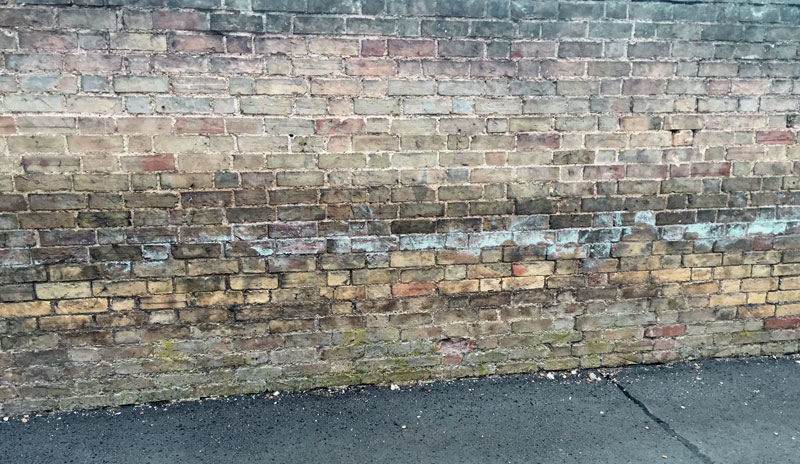What is rising damp?
As the name suggests, rising damp will usually show as damage that starts at ground or floor level and rises up on the walls, causing damage to wall surfaces and to decoration. Untreated damp can also cause timber decay, leading to structural problems.
Rising damp is caused by the upward movement of ground water in structural walls via capillary action. This is often identified on the internal face of the walls by horizontal salt banding usually at a height of 1–1.5m above ground level, indicating the height that the rising damp has reached within the wall.
Rising damp is most commonly found in older properties where there may be no integrated Damp Proof Course (DPC) within the walls. It can also occur when a damp proof course has failed or has been incorrectly located in relation to external moisture sources, or when the damp proof course has been damaged through external or internal alterations.
Although less common, rising damp can still occur in more modern properties, usually where the Damp Proof Course has been incorrectly installed or where it has been bridged by external alterations at ground level.

Whatever the cause, it is important that a full damp survey is carried out by a qualified experienced Surveyor, who can identify the problem and recommend specific remedial works if these are considered necessary.
Rising damp diagnosis
It is essential that rising damp is correctly diagnosed before any remedial works can be recommended. Wrong diagnosis can lead to costly and unnecessary work.
Our PCA-qualified surveyors are trained to identify rising damp in buildings by recognising moisture patterns and identifying the source of the moisture within the structure. All our surveyors have specialist damp meters, which are used to measure the moisture content of the building fabric and to trace moisture patterns within the internal finishes.
Before we recommend any works, we will ensure that the cause and source of damp has been completely and comprehensively identified, so that we can recommend the best, most cost-effective solution for your specific situation.
Our survey provides you with a detailed report of our findings, together with a priced schedule of works.
Rising damp treatment
Where rising damp is diagnosed it is vital that the source of moisture is identified before any work starts. Treatment work, such as a Damp Proof Course, will only prevent further moisture rising from the ground, so we will only recommend this solution where it is clear that this will resolve the problem completely.
Damp Proof Course
If our survey concludes that a Damp Proof Course is necessary, then we will install a remedial Damp Proof Course using the latest technology.
This involves injecting a specialist masonry cream damp proofing system into the mortar course at the base of the wall. This cream then diffuses, before curing into a water-repellent resin that prevents further damp rising through capillary action within the wall.
Replastering
Along with the injected Damp Proof Course, it may be necessary to replace contaminated plaster on the walls. If salt contamination has occurred the affected plaster will be removed and our specialist plasterers will replace it with a salt-retardant plaster or render that will prevent further damage to paint or wallpaper finishes on your walls.
Historic Buildings
We are specialists in working with historic buildings where internal plaster may need to be retained. In this situation, we usually recommend a membrane system to resolve the rising damp problem, over which any internal finishes – such as plaster, plasterboard, panelling etc. – can be reinstated.
To find out more about our specialist damp services, please contact us for more information or a quote.
